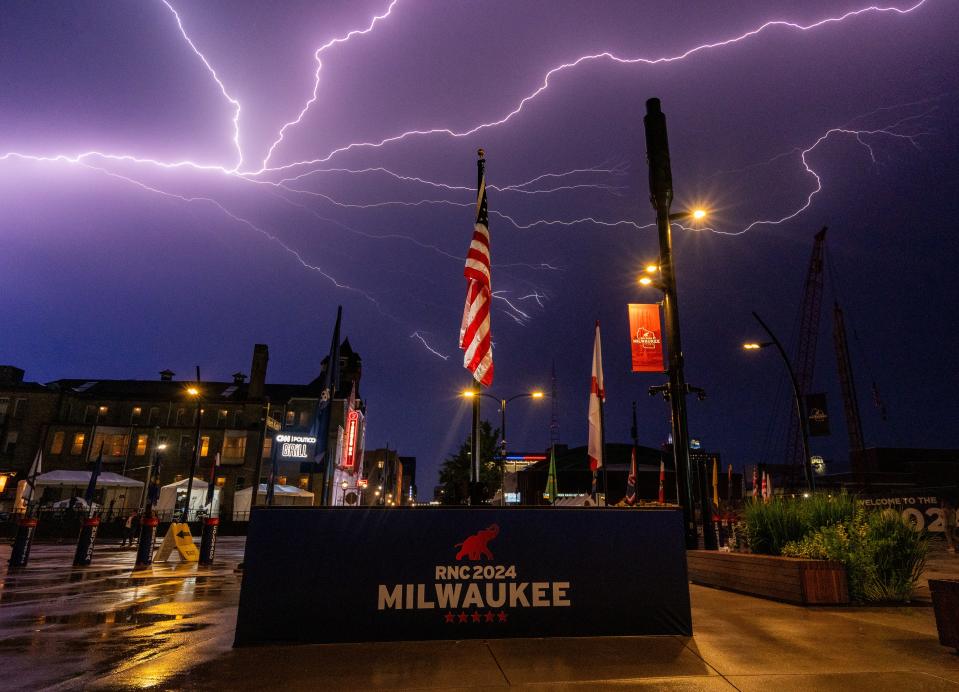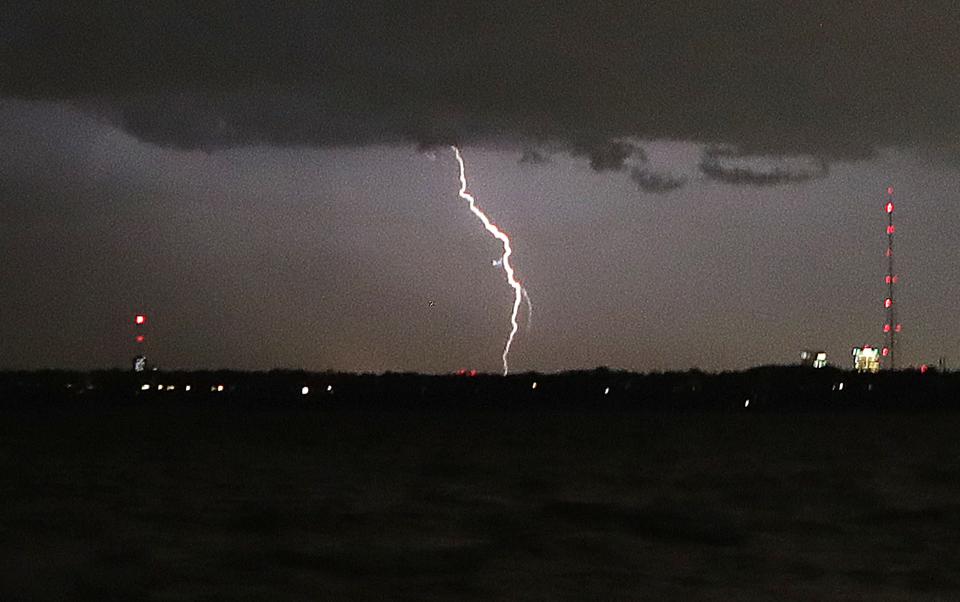Does it seem like we're having lightning and thunder all summer? Here's what's going on.
Our rainy spring has now stretched deep into July, so it's perhaps no surprise that we're also seeing more noisy, window-rattling thunderstorms accompanied by lightning.
Just ask anyone who was at the RNC Monday night, or Summerfest on several nights.
June, July and August are the peak months for such weather events, according to the National Weather Service. They're also the months when 75% of the annual deaths from lightning strikes — however rare — happen.
What exactly is a lightning strike? Why are they more common in the summer? How can you stay safe from them?
Here's what you need to know.
How lightning is made
People have been trying to figure out why the sky breaks out into a scary light-and-sound show for centuries, and it wasn't until the 1900s that we learned what caused it. Even now, some mysteries remain.

"If you've ever walked across a carpeted floor, touched a doorknob and gotten a little shock? That's what lightning is, just on a much bigger scale," explained Chris Vagasky, manager of the Wisconsin Mesonet and a meteorologist at the National Lightning Safety Council.
The ideal setup for a thunderstorm is warm, humid air close to the ground and cooler air above, a condition called atmospheric instability. Under certain conditions the warm air will get pushed up. Usually this happens when the warm air heats up, or it could be summertime lake breeze blowing inland that pushes the air upwards.
In typical conditions, the hot air condenses in the colder termperatures of the upper atmosphere to form clouds. But under the right conditions, the hot air can rise thick and fast, forming towering thunderstorm clouds. Lightning forms in these cauliflower-like cumulonimbus clouds.
Those clouds are made up of particles including raindrops, ice crystals and soft hailstones known as graupel. With the constant uplift from below, the cumulonimbus cloud can be a violent place, with all those particles bumping into each other. The result is an imbalanced electric charge.
"And at a certain point the charge buildup starts to break down. That's when you get lightning " Vagasky said.
In that situation, is there always lightning?
No. Sometimes you can have a lot of electric charge and no lightning. Scientists don't understand what exactly pushes a highly charged collection of cloud particles over the edge to produce lightning.
"So getting from the charge to the actual lightning is still an open question in science, and something that we're trying to understand better," Vagasky explained.
What scientists do know is that the flash is an attempt to dissipate the charge and restore balance. Sometimes a single lightning flash is enough, but a series of flashes may be needed.
Are there other, exceptional conditions that cause lightning?
Vaporized rock emanating from a volcanic eruption can do the work of ice crystals, destabilizing the charges in the atmosphere to produce lighting, said Cameron Miller, meteorologist at the National Weather Service.
Pollution from human activity also can make lightning more likely. The particulate matter we produce "gives something for water droplets to grab onto," Vagasky said.

Not all lightning hits the ground; most of it stays within the clouds. When it does reach the ground, it travels at around 200,000 miles per hour. And for a brief moment, it heats the air around it to 50,000 degrees Fahrenheit. That's five times the temperature on the sun. And a typical lightning flash contains 2,000 times the amount of current running through your walls.
These are frightening figures, but staying safe from lightning can be simple.
How to stay safe in a thunderstorm
If historical trends hold, deaths by lightning will peak this month. Typically, 32 people die every year in the U.S., most of them while recreating.
If you find yourself in a thunderstorm, the first thing to ascertain is how far away the lightning is. If you see a flash while outdoors, count the seconds before the bang. Miller's advice is to get indoors if thunder comes rolling within 30 seconds after you see the lightning.
Vagasky is more cautions. "There is no safe place outside during a thunderstorm," he said. His advice is to go into a building with plumbing and electricity or an enclosed vehicle. The metal and wiring will absorb the electricity and protect you.
You may come across some less helpful advice. One thing to look out for is the "lightning crouch." The objective of this common piece of advice is to get as low as possible to avoid being struck by lightning, but Vagasky and Miller said it doesn't make you any safer.
The only way to stay safe is to go indoors, Vagasky reiterated, saying, "holding an umbrella, holding a golf club, wearing rubber shoes, holding your cell phone, none of that is going to attract lightning or protect you from lightning."
Most people who feel the effects of lightning are not directly struck by it. Instead, the electricity can jump off a building or a tree or spread through the ground before reaching them. And despite the intense heat generation, that's not the main worry.
"It's really the electric charge that is the main concern to cause injury or fatality from the lightning," Vagasky explained. Because of the charge, a person can go into cardiac arrest.
Surprisingly, most people who are struck can survive, but will need medical attention. Vagasky's advice if you see someone struck by lightning is call 911, check if they are breathing, and if they aren't, start chest compressions and CPR right away.
This article originally appeared on Milwaukee Journal Sentinel: What is lightning and how to stay safe in a summer thunderstorm?

